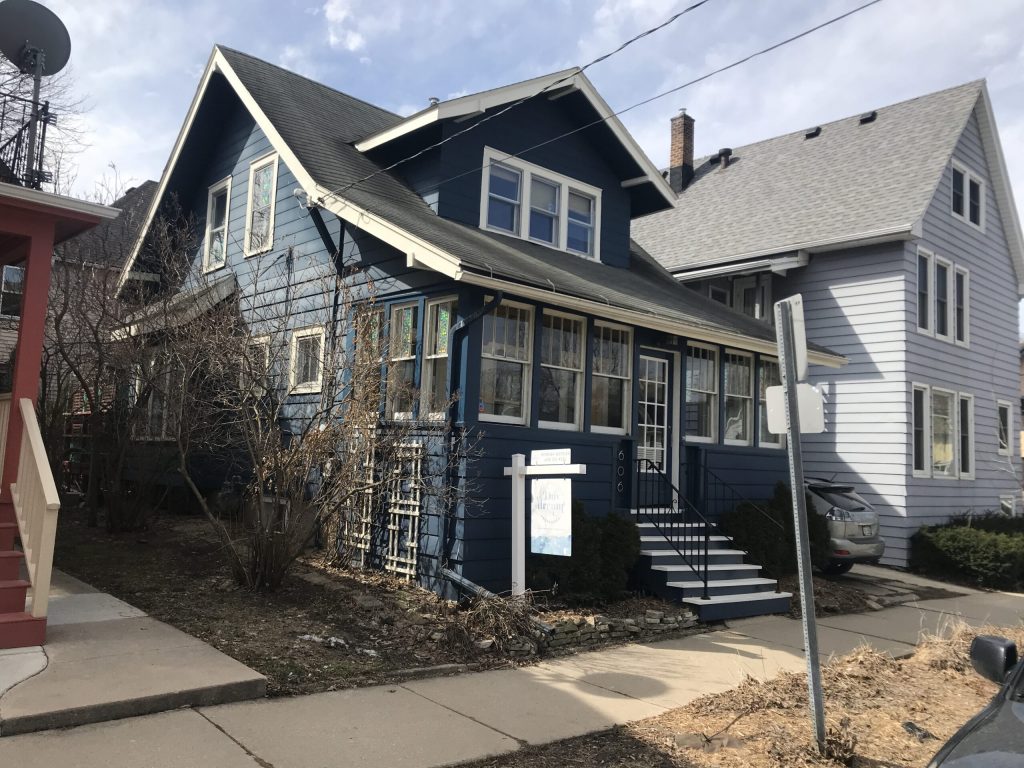‘Signs of Life’ in Wisconsin Housing Market
Sales up 8.1% in June. But homes unaffordable for many first-time buyers.
Sales of previously owned homes in Wisconsin rose 8.1 percent in June compared to the same month last year.
That’s according to the Wisconsin Realtors Association’s latest housing report. Kurt Paulsen, professor of urban planning in the Department of Planning and Landscape Architecture at the University of Wisconsin-Madison, called the sales jump a “mixed signal.”
“It’s positive to see a little movement in June, but if you look at the numbers for the first six months of this year compared to the first six months of last year, we’re right at about the same pace,” Paulsen told WPR’s “Wisconsin Today.” “(But) there’s signs of life.”
According to the report, the median home price hit a record high of $340,000. Paulsen said Wisconsin homes are now unaffordable for many first-time home buyers.
“That younger generation — they are really being squeezed,” Paulsen said. “Older home buyers with cash are out-competing first-time home buyers who are finding it difficult to get a mortgage.”
Paulsen joined “Wisconsin Today” for a closer look at the housing market in Wisconsin and what factors are affecting housing affordability in the state.
This interview has been edited for length and clarity.
Kate Archer Kent: What effect are mortgage rates having on the housing market here?
Kurt Paulsen: In Wisconsin, we have a greater percentage of our current homeowners who have mortgages with less than 4 percent interest rates … low interest rates, for people who already refinanced, keep them locked in. And for first-time home buyers, what it means is that your dollar stretches less far to buy something that’s more expensive. We sometimes call that a “double whammy.”
I would tell people that the era of cheap money — 5 percent or lower interest rates — we’re not going to see that again in the next 10 or 20 years. If we do, it means there’s some sort of global financial crisis or pandemic, neither of which are very good outcomes.
KAK: According to this report, affordability of Wisconsin homes increased by 2.6 percent over the last year. It’s a slight improvement over the record-low affordability Wisconsin saw last June. How do you view housing affordability?
KP: Affordability is really about whether the middle-income family at the median can afford the median-priced home. … The challenge with affordability is, as we’ve seen, people in the middle of the income market are doing OK. We are able to find something to buy. But it’s that first-time home buyer, that starting teacher or nurse, that really is being squeezed. Because, as the report shows, houses under $300,000 sell really quickly, but there’s not much at all. In Madison, there’s nothing under $400,000.
KAK: What are some of those long-term effects when there is a lack of affordable housing in a Wisconsin community?
KP: If someone who works in your community, like a teacher or nurse or police officer, cannot afford to live near your community, then they might rent for longer. That might be good for the rental market, but they’re not able to build equity or get that housing stability. Or they have to drive a long distance. We see that certainly in Dane County, and even in the Green Bay and Eau Claire area, where teachers are driving 30 to 45 minutes (to work).
The alternative would be to buy a much smaller home, or double up, or take in a roommate. So it’s less than ideal. In the long term, if you can’t build housing opportunities for the people working in your community, they’ll go somewhere else. So employers will tell you: It’s really hard to recruit or retain your workforce, particularly that entry level or service industry worker, or even people at the middle of the income scale.
KAK: Last month, Gov. Tony Evers announced $2.5 million in funding for new affordable housing developments, and it was part of a larger investment that, so far, has supported the development of over 1000 affordable housing units statewide. What can be done to create more affordable housing units?
KP: There’s two big policy buckets that the state has. One (you mentioned): last session, in a bipartisan fashion, our Legislature and governor agreed to a half a billion dollars for a number of packages. … The biggest component was trying to deal with the land and the infrastructure costs for new housing development.
The second bucket is for local governments and states thinking about various zoning and building codes. All of these little regulations really constrain how much housing can be built and what type of housing. In a lot of our communities, one of the reasons we don’t build starter homes is you really can’t. It’s illegal, because you can’t build that kind of small house on a small lot: the type of housing that we used to build a lot of in this state. We’ve seen a lot of states move on zoning reform. We have not yet seen Wisconsin move in that direction. I suspect we will see a lot of momentum in the coming years.
‘There’s signs of life’: Wisconsin housing expert analyzes new state data was originally published by Wisconsin Public Radio.
If you think stories like this are important, become a member of Urban Milwaukee and help support real, independent journalism. Plus you get some cool added benefits.






















(Kurt Paulsen’s question reply)
“I would tell people that the era of cheap money — 5 percent or lower interest rates — we’re not going to see that again in the next 10 or 20 years. If we do, it means there’s some sort of global financial crisis or pandemic, neither of which are very good outcomes”.
(from Reuters July 14th)
“U.S. President Donald Trump says the Federal Reserve should set its benchmark interest rate at 1% to lower government borrowing costs, allowing the administration to finance the high and rising deficits expected from his spending and tax-cut bill”.
So maybe we can amend Paulsen’s reply to
“I would tell people that the era of cheap money — 5 percent or lower interest rates — we’re not going to see that again in the next 10 or 20 years. If we do, it means there’s some sort of global financial crisis or pandemic or the reelection of Donald Trump, all of which are not very good outcomes”.
housing materials may become more expensive with tariffs on lumber and steel